
Hubertus and Wansuela Suerte: “Wansuela was for me perfect, she was not the biggest mover, but she was a perfect, sensitive mare that you really could ride with two fingers, no spur and no whip. It is not with every horse that you can do it like that, but for me, always the goal of the training is that at the end it is as easy as possible and as light as possible – for me, this is absolutely the goal and it works like that.”
There are several amazing things about Germany’s modern dressage master, Hubertus Schmidt. One is not only has he produced Grand Prix horses of great quality but he has produced them in great quantity as well, producing new Grand Prix horses every year. This article sets out to find how Hubertus goes about selecting a prospect.
The other amazing thing about Hubertus Schmidt is his warmth and generosity – he was only too happy to take time out from a busy competition to share his knowledge with readers in far away Australia. Once again, thank you Hubertus!
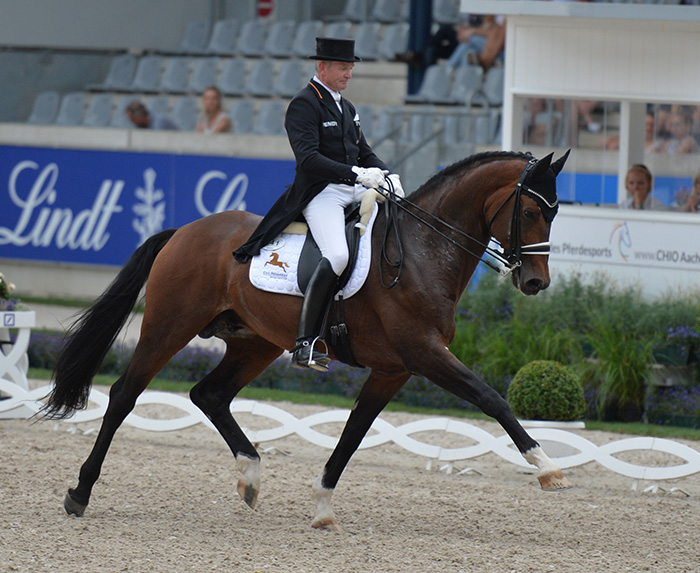
Another Grand Prix horse in the making for Hubertus, Escolar competing in the Prix St Georg at Aachen in 2017
What is the most important thing when you go looking for a dressage horse?
“For sure they need good gaits. You can make compromises because it is very difficult to find a horse with three super good movements, so maybe one horse is not so good in the canter, the next one is not so good in the walk. I think the trot must be really good because the trot work – and I include piaffe and passage – makes up most of the Grand Prix work. So the first is that they have good gaits.”
“The next is very important for me – the horse must be able to work through its body, not just in the back, the whole horse must come together. Often you have super nice built horses and they look very pretty but they are un-elastic, not working in the body. You look at other horses, and you say it is not possible for this horse to do piaffe / passage, he is the wrong shape, yet I had one horse, much too long, high behind, but he was super in piaffe / passage, super easy to collect. What is important is how they can work with their body.”
“The next is very important for me – the horse must be able to work through its body, not just in the back, the whole horse must come together. Often you have super nice built horses and they look very pretty but they are un-elastic, not working in the body. You look at other horses, and you say it is not possible for this horse to do piaffe / passage, he is the wrong shape, yet I had one horse, much too long, high behind, but he was super in piaffe / passage, super easy to collect. What is important is how they can work with their body.”
Next we ask Hubertus, Can you select a Grand Prix horse moving free?
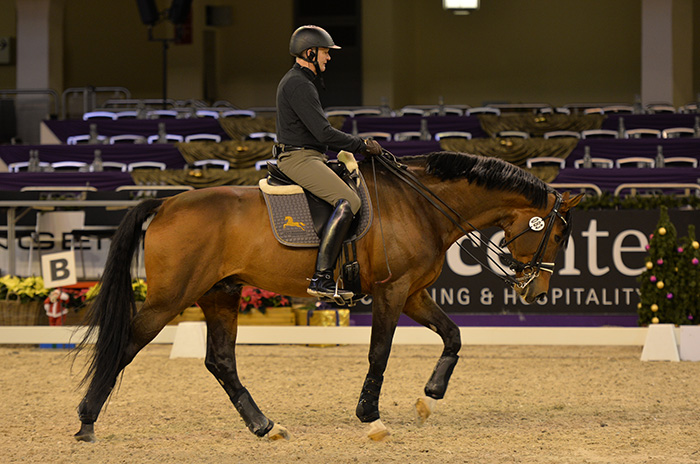
“What is important is how they can work with their body.”
Can you see that when they are moving free?
“No, I have to sit on it. There are a few good trainers who can check that when the horse is running free, but I can’t do that at all, I really have to feel it. For that they must be a little older, at least four years old, better five, then you can play a little bit, ask to collect and see what they are doing.”
“You don’t try piaffe or passage or something like that, that is not necessary. Only make the trot a little shorter, make the trot really swinging – then I can really feel if they are able to make piaffe and passage, because if they are horses like that, that give that feel, they will be able to do it.”
“The third is that they are good in the mind, that they are sensitive enough. For me, and I am always looking for Grand Prix horses, better a little too hot than too lazy. I think that is not for everybody – for the amateur rider maybe better that they are not too sensitive. But the horse has to be sensitive to make good Grand Prix sport when they need expression without the whip, and without pushing too much.”
Does the breeding interest you – or you don’t care?
“I don’t care about that. It is very important if they are very young, like three-year-old fillies, when you can’t try them so much, but for me when they are five or six and I try them, then the breeding doesn’t matter. I have to feel and try them – I don’t have to buy off a piece of paper that says, this line is too sensitive, or too spooky, if they are five or six, then I can really try.”
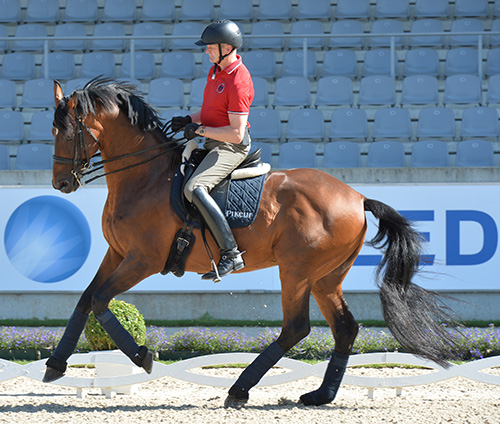
How soon after you have bought the horse and taken it into your system do you know whether the horse is going to go Grand Prix?
“After two days – otherwise I don’t buy them.”
They always go Grand Prix the horses you buy?
“When I buy them when they are five or six, then 100% of them go Grand Prix for the last ten years. Not all of them on the super super level, but most of them are international Grand Prix horses.”
That’s incredible…
“It’s true, but for that I need to sit on them, and they must be at the end of their four-year-old year, almost five at least – it is easier when they are six, at this age when I can play with them going forward, backwards, specially in the trot that you can feel piaffe / passage.”
we asked Hubertus how important conformation is next
And you don’t care about conformation, they can be high behind, whatever…
“For sure normally it is easier if they are well balanced, but it is more important, I can only keep coming back to this expression, that they can work with their body. They can work through the body, they are swinging, they are able to be really elastic in their movement, especially in the trot. If they can do that then for sure they learn passage, they learn piaffe, not everybody for an eight, but they all learn it.”
You don’t ever have problems with flying changes?
“You are right, that is the next step. If they are five years old then normally you can work on it, you can play a little bit. If they can do one flying change, then they can learn everything, if they do one, then they will do the one tempis. I’ve never had a horse that can do one simple flying change at the age of five or six, that did not go on and do the one tempis. If they can do one change to both sides, then they can learn the one tempis. As soon as they are really sure in one change – that means in every situation I want to make the change, counter canter, long side, diagonal, I can do one flying change anywhere I ask, then it is really quick to come to four and three tempis, and then one or two years later, two and one tempis.”
 Do you like to work your horses a lot? Do you work them once or twice a day?
Do you like to work your horses a lot? Do you work them once or twice a day?“Once – I don’t have the time to do more, but what we do is that they go out for a walk under saddle, around the fields. We take them out for 45 minutes, we have a track around our village, and we use that. Normally we work them in the morning, and in the afternoon they go out for a walk.”
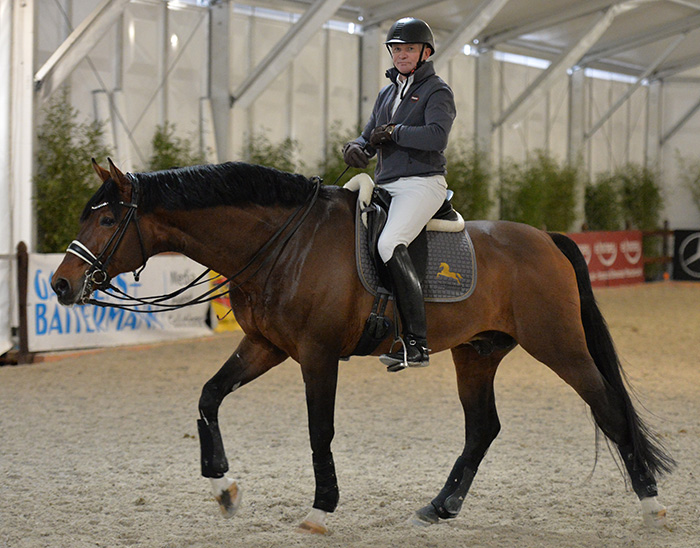
Do you think that it makes any sense to talk about Grand Prix horses being ‘happy’?
“It doesn’t matter if it is a Grand Prix horse, or a lower level horse, I think the goal must be that it is as nice as possible for the horses at the end of the training. That must be the result. I am 100% sure that you are able to do that with all the horses. I am realistic and I know that sometimes you have to push a bit harder, sometimes you use the whip, and you use the curb, to bring them on the way – but as a result of the training, the end result must be that it is very nice for the horses.”
“If the horse has the choice, they want to go out in the fields and nothing else. They don’t want to draw a wagon, they don’t want to jump, they don’t want to do dressage, but if it is a nice training in the end I don’t know if they enjoy it really, but I am 100% sure they don’t say ‘oh oh working again!’ They get used to it, and if they are really through, then it is easy for them.”
“Normally at the end, with a Grand Prix horse it must be easy, okay sometimes you have to push them a little bit, and say okay boy, go now, and push a little hard, but over all it must be easy for them.”
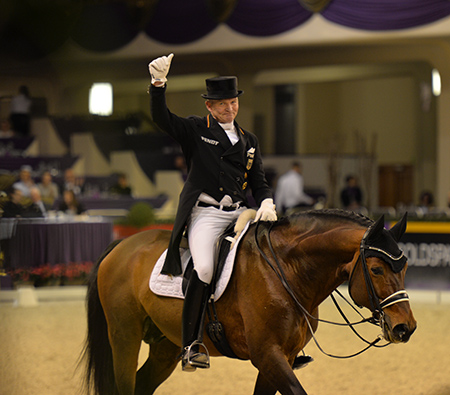


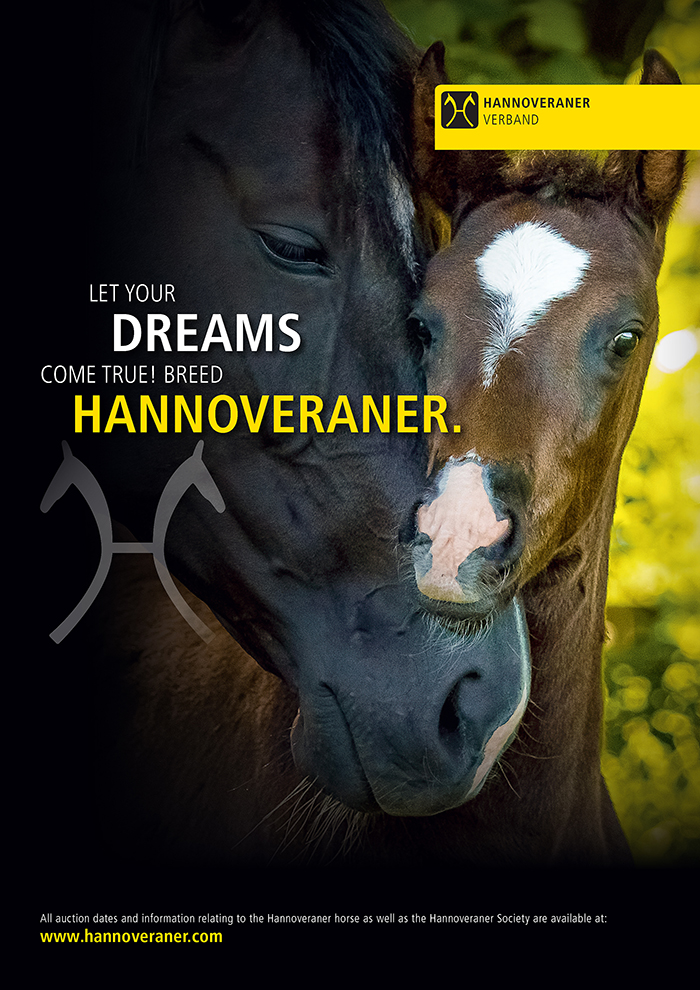
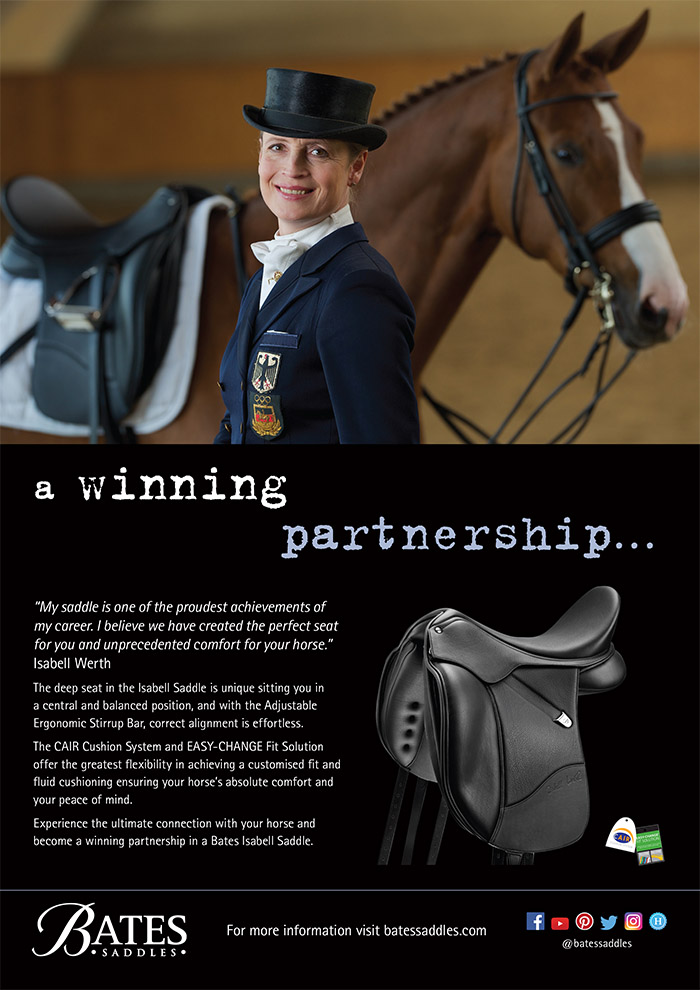

Great article with great advice from a modern master – thanks THM
Thank you for making this article available THM. This fella is a class act. His methodology is sound, based on classic principles WHICH INCLUDE ensuring that for the Horse the work does not dull its brain nor spirit.
Super article from the ‘Master’. Thank you THM.